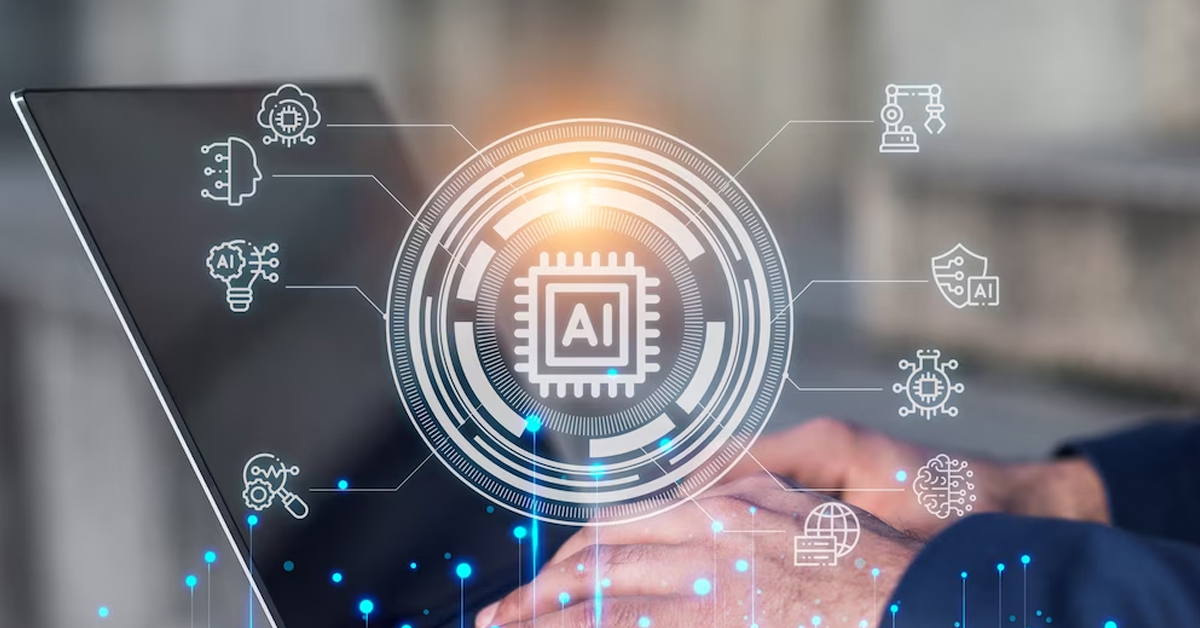Exploring the Foundations: Machine Learning, Deep Learning, and Natural Language Processing (NLP)
Machine Learning:
Machine learning algorithms analyze data, identify patterns, and make predictions or decisions based on those patterns:
Machine learning algorithms are designed to process input data, extract relevant features, and learn patterns or relationships within the data. This enables them to make predictions or decisions on new, unseen data.

For example, in a spam email detection system, a machine learning algorithm can analyze the content and characteristics of emails to identify patterns that distinguish spam from legitimate messages.
It involves the use of statistical techniques and mathematical models to train algorithms on labeled data:
Labeled data consists of input data along with corresponding output labels or target values. This labeled data is used to train machine learning algorithms by adjusting their internal parameters or weights.
The algorithms use statistical techniques to estimate the relationship between input data and output labels, allowing them to generalize and make predictions on new, unseen data.
The algorithms learn from examples and adjust their parameters to improve performance:
Machine learning algorithms learn by iteratively adjusting their internal parameters based on the examples in the training data.
This iterative process, often referred to as training or learning, aims to minimize the difference between the algorithm’s predictions and the true output values in the training data.
By continuously adjusting their parameters, the algorithms improve their performance and become better at making accurate predictions or classifications.
Machine learning can be divided into three main categories: supervised learning, unsupervised learning, and reinforcement learning:
Supervised learning involves training the algorithm on labeled data, where the input data and corresponding output labels are provided. The algorithm learns to map input data to output labels based on the examples in the training data.
Unsupervised learning involves training the algorithm on unlabeled data to discover patterns or relationships within the data. The algorithm learns to identify similarities, groupings, or structures in the data without explicit guidance.
Reinforcement learning involves training the algorithm through interaction with an environment. The algorithm learns to take actions that maximize cumulative rewards or minimize penalties based on feedback received from the environment.
Machine learning has various applications, such as image recognition, fraud detection, recommendation systems, and predictive analytics:
Image recognition: Machine learning algorithms can analyze and classify images based on their content, enabling applications such as object detection, facial recognition, and autonomous vehicles.
Fraud detection: Machine learning algorithms can detect patterns or anomalies in financial transactions to identify fraudulent activities.
Recommendation systems: Machine learning algorithms can analyze user preferences and behavior to provide personalized recommendations for products, movies, music, and more.
Predictive analytics: Machine learning algorithms can analyze historical data to make predictions about future events or outcomes, enabling applications such as sales forecasting, demand planning, and predictive maintenance.
Deep Learning:
Deep learning utilizes artificial neural networks called deep neural networks (DNNs) that have multiple layers of interconnected nodes (neurons):
Deep neural networks are inspired by the structure and function of the human brain, with each layer of neurons performing computations and passing the results to the next layer.
The depth of the network, with multiple hidden layers, allows deep learning models to learn hierarchical representations of data and capture complex patterns.
Each layer in a DNN performs transformations on the input data and passes it to the next layer:
Each layer in a deep neural network applies mathematical operations, such as linear transformations and nonlinear activation functions, to the input data.
These transformations enable the network to extract increasingly abstract and meaningful representations of the data as it propagates through the layers.
Deep learning algorithms automatically learn hierarchical representations of data by adjusting the weights and biases of the network during the training process:
Deep learning models learn by iteratively adjusting the weights and biases of the neurons based on the examples in the training data.
This process, known as backpropagation, uses optimization techniques to minimize the difference between the network’s predictions and the true output values in the training data.
Deep learning is well-suited for processing complex data types, such as images, audio, and text:
Deep learning has demonstrated exceptional performance in tasks involving complex data, where the input has rich and intricate structures.
Convolutional Neural Networks (CNNs) are commonly used in deep learning for image and video processing tasks, leveraging the spatial relationships between pixels.
Recurrent Neural Networks (RNNs) are used for sequential data processing tasks, such as natural language processing and speech recognition, capturing dependencies over time.
Deep learning has achieved remarkable success in various domains, including image classification, object detection, speech recognition, and natural language understanding:
Image classification: Deep learning models have achieved unprecedented accuracy in classifying images into specific categories, surpassing human-level performance in some cases.
Object detection: Deep learning algorithms can accurately detect and localize objects within images or videos, enabling applications such as autonomous driving and video surveillance.
Speech recognition: Deep learning models have significantly improved the accuracy and robustness of speech recognition systems, enabling voice assistants and transcription services.
Natural language understanding: Deep learning models, particularly transformer models like BERT, have advanced the state-of-the-art in tasks such as sentiment analysis, language translation, and question answering.
Natural Language Processing (NLP):
NLP involves tasks such as text classification, sentiment analysis, language translation, information extraction, and question answering:
NLP focuses on developing algorithms and models to process and understand human language, enabling computers to interact with text or speech data.
Text classification involves categorising text documents into predefined categories or classes.
Sentiment analysis aims to determine the sentiment or emotion expressed in a piece of text, such as positive, negative, or neutral.
Language translation involves automatically translating text or speech from one language to another.
Information extraction focuses on identifying structured information from unstructured text, such as extracting named entities, relationships, or events.
Question answering aims to generate accurate and relevant answers to user questions based on a given context.
NLP algorithms process and analyze textual data to extract meaningful information, infer sentiment, or generate human-like responses:
NLP techniques involve tokenization (splitting text into individual words or tokens), part-of-speech tagging (assigning grammatical tags to words), syntactic parsing (analyzing the grammatical structure of sentences), named entity recognition (identifying named entities like person names or locations), and semantic analysis (understanding the meaning of text).
Machine learning and deep learning techniques are often used in NLP to train models on labeled text data:
NLP models, such as sentiment analysis or text classification models, are trained using machine learning or deep learning algorithms on labeled text data, where the input text is associated with predefined categories or sentiment labels.
These models learn patterns in the text data and can generalize to make predictions on new, unseen text.
Word embeddings, such as Word2Vec and GloVe, are commonly used representations of words in NLP models:
Word embeddings are dense vector representations of words that capture semantic and contextual relationships between words.
Word embeddings enable NLP models to understand the meaning and context of words, improving their performance in various tasks.
Recurrent Neural Networks (RNNs) and Transformer models, such as the BERT model, have significantly advanced the state-of-the-art in NLP tasks:
RNNs are commonly used in NLP for tasks that involve sequential data, as they can capture dependencies and contextual information over time.
Transformer models, such as BERT (Bidirectional Encoder Representations from Transformers), have revolutionized NLP by leveraging self-attention mechanisms to capture global dependencies and contextual information in a text sequence.
NLP applications range from chatbots and virtual assistants to language translation systems and information retrieval:
Chatbots and virtual assistants use NLP techniques to understand and respond to user queries or commands in a conversational manner.
Language translation systems utilize NLP algorithms to automatically translate text or speech from one language to another.
Information retrieval systems employ NLP techniques to process and analyze large collections of text data, enabling efficient search and retrieval of relevant information.
NLP faces challenges such as ambiguity, context understanding, and cultural nuances in language interpretation:
Natural language is often ambiguous, with words or phrases having multiple meanings depending on the context.
Understanding context and disambiguating meaning is a significant challenge in NLP, as it requires capturing semantic and contextual relationships between words or sentences.
Cultural nuances and language variations add complexity to NLP tasks, as different languages or dialects may have unique linguistic characteristics and expressions.





